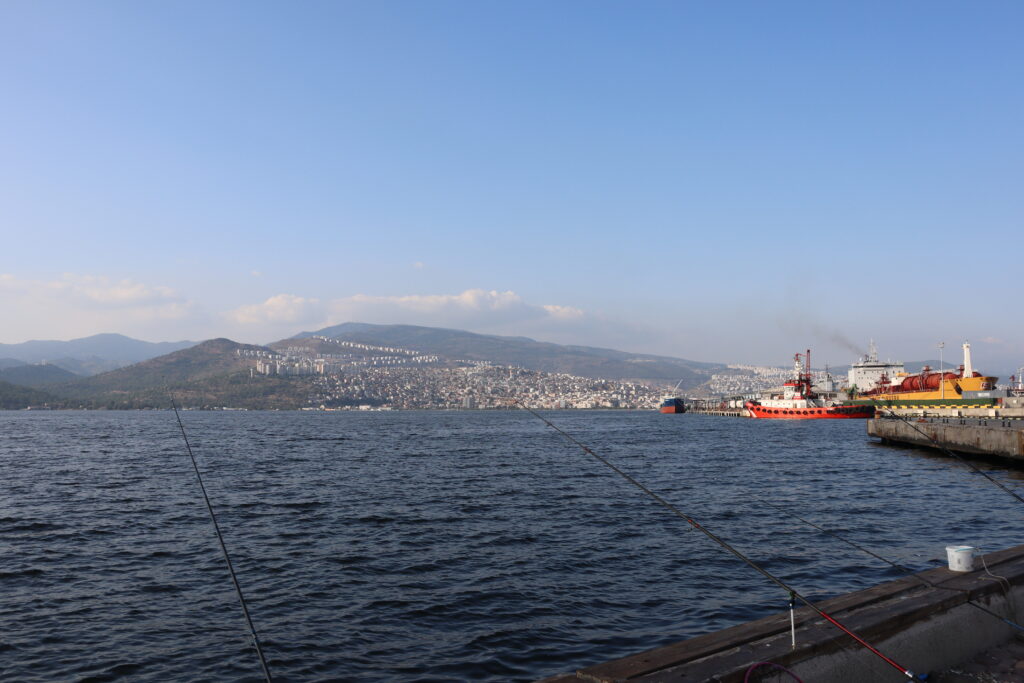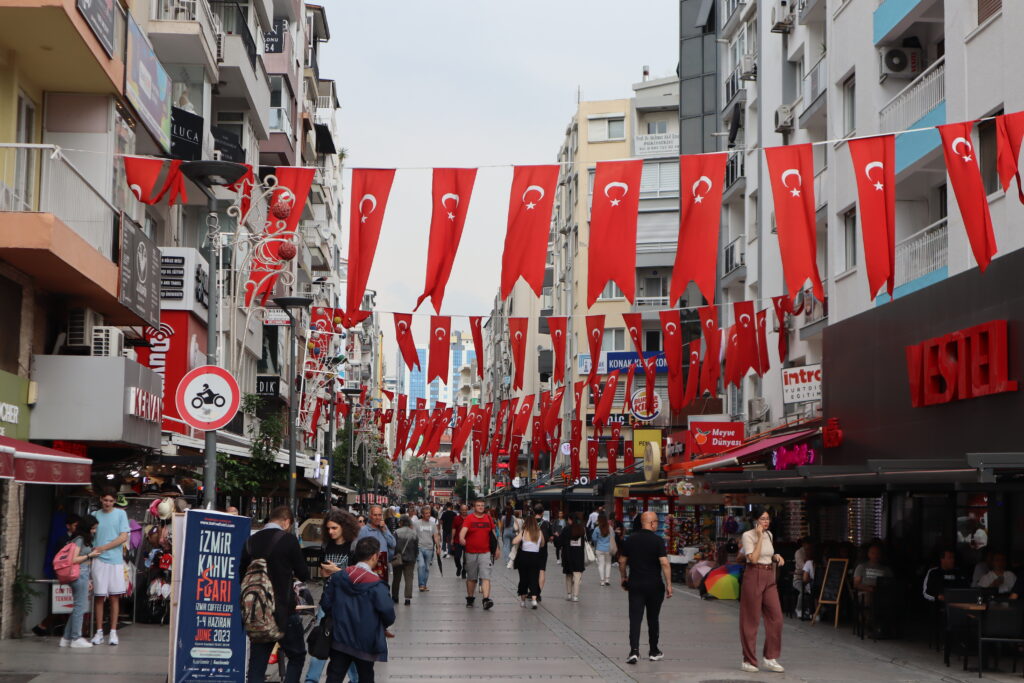
I decided to see a bit more of Turkey while I was here, something beyond Istanbul. So, I went to Izmir for two weeks, because it gave me the opportunity to visit Pamukkale and Ephesus. More on that later.
Izmir is Turkey’s third largest city and sits on the enormous Bay of Izmir. The bay is about 40 miles deep and 20 miles wide, fed by the Aegean Sea. Being so big, the water can be surprisingly choppy when the wind picks up, but it doesn’t seem to bother the fleet of ferries connect terminals all along its coastline.
For you older folks, you might know the Izmir by its ancient Greek name of Smyrna. The Turks changed the name Izmir in the 1930s.
My first impression of Izmir was at the airport. It’s small but well designed. I walked off the airplane, went down some stairs, and I was at baggage claim. Gotta love small airports. Just outside the terminal is the Adnanmenderes Havaalanı station, one of Izmir’s many Izbahn station (sort of a metro/lightrail/train system). The train would take me within a few hundred yards of where I was staying. Only one problem: I didn’t have an “Izmirim Kart”.


Without the “Izmirim Kart”, or the rechargeable travel card, I couldn’t board the train. There are machines at the station, but they are only good for “topping up” a card. They do not sell the cards themselves. And of course, the ticket office was closed. It seemed that every other tourist was having the same problem figuring out how to get the Izmirim Kart. About 15 minutes later, an attendant opened the ticket window and sold me a metro card. The card itself costs about $4 and that includes $1.50 on the card. I added another $2.50 at the machine just in case. Three minutes later, I was on my way.
I had rented an apartment in the lively Alsancuk area, which was very close to the light rail station. Adjacent to the rail station was a street car station stop (that took me to one of the nicest shopping malls I have ever been to). Nice. What can I say about Alsancuk? It is an older, and yet to be gentrified, area of shops, restaurants, bars and clubs. There are several major pedestrian streets, which are almost always packed, a quite a few alleys filled with bars. And it has a long stretch of bay frontage where folks walk, sit, fish, cycle, and take selfies.
The trip to Pamukkale (told you I’d have more on this) involves a 5-hour train ride for 98 Turkish Lira (about $5). Pamukkale is reported to be the most visited site in Turkey, but luckily, I saw no proof of that aside from a very large, and very empty, parking lot. It was a hot, Wednesday afternoon, so maybe that hat something to do with it.

Anyway, Pamukkale (meaning “Cotton Castle”) is a series of white travertine terraces formed by calcite-rich water flowing down the hillside. Kind of like what happens to your bathroom faucet, but nicer. At one point someone decided to cut a road into the travertine hillside. Ugh. The travertine is now being ever so slowly built back up to repair the scar from the road. The result is somewhat unnatural, but hard to spot if I hadn’t just told you. To protect the travertine, you have to walk on the travertine bare foot, or not at all. Actually, it wasn’t so bad: the travertine is fairly smooth, while also non-slip. I wonder if anyone has ever thought to use travertine in houses?

The ancient city of Hierapolis sits next to the Cotton Castle. Built by the Greeks, it was later taken over by the Romans. Today, many of the stones have been re-stacked. Not always to good effect.
The train back to Izmir stops at Selcuk, just a short distance from the archeological site of Ephesus. Due to the thunderstorms, I decided to stay on the train. So, I did not visit Ephesus. If I had, I would be describing more Greek and Roman era stones. Consider yourself fortunate…

